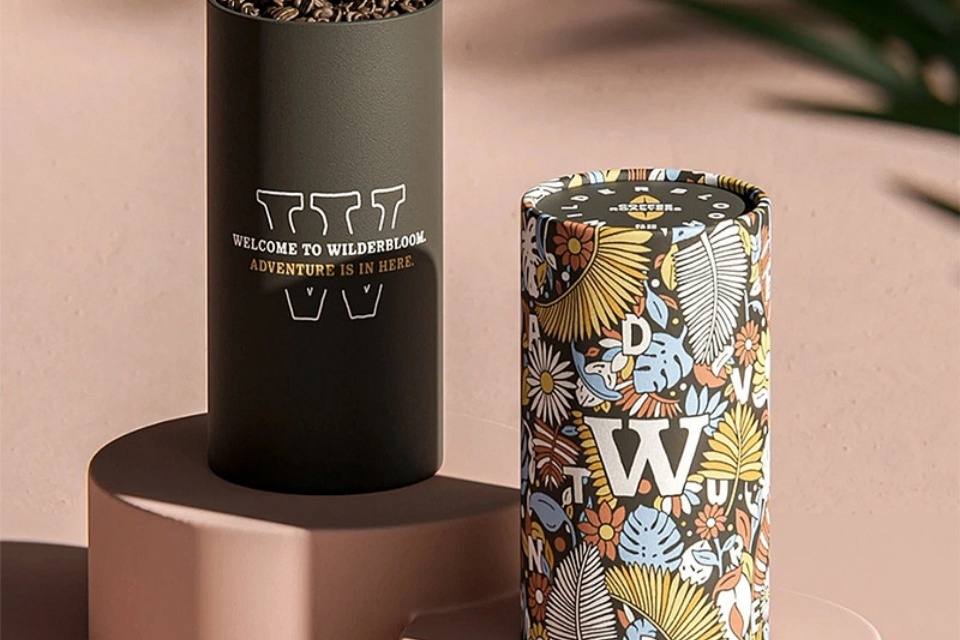Industry News
Color Psychology In Cosmetic Packaging
Color Psychology In Cosmetic Packaging
Summary
Color psychology in cosmetic packaging examines the impact of color choices on consumer perceptions, emotions, and purchasing behaviors within the cosmetics industry. As a crucial element of branding and marketing, color serves not only as an aesthetic choice but also as a strategic tool that can evoke specific emotional responses and influence brand loyalty. The study of color psychology has gained prominence as brands increasingly recognize the power of color to attract attention, communicate messages, and differentiate products in a competitive marketplace, underscoring its importance in contemporary marketing practices.
Historically, the evolution of color in cosmetics has been influenced by cultural shifts and iconic beauty standards, notably those established during Hollywood's golden age. This period saw colors such as bold reds and soft pinks become associated with femininity and glamour, shaping consumer expectations and preferences in cosmetics. Today, diverse global perspectives on color further enrich the discourse, as different cultures interpret colors through unique lenses that reflect their values and traditions. For instance, while white may symbolize purity in Western contexts, it can denote mourning in some Asian cultures, highlighting the necessity for brands to navigate cultural sensitivities in their marketing strategies.
The integration of color psychology into cosmetic packaging has sparked both enthusiasm and criticism within the marketing community. Proponents argue that understanding the emotional and psychological effects of colors can enhance consumer engagement and purchasing decisions, with research indicating that up to 90% of consumers' decisions are influenced by color. However, critics caution against oversimplifying color meanings and relying on generalized assumptions, stressing the importance of context and individual consumer experiences. This debate emphasizes the need for ongoing research and a nuanced approach to color application in branding, acknowledging the complexities that define consumer behavior in a multicultural marketplace.
As the cosmetic industry continues to evolve, trends in color usage are increasingly informed by sustainability and ethical considerations. Modern consumers favor brands that prioritize environmentally friendly practices, prompting a shift toward packaging designs that combine appealing color schemes with sustainable materials. This intersection of color psychology and sustainable design reflects a broader movement in the beauty industry, where color not only enhances aesthetic appeal but also conveys values of social responsibility and environmental awareness, resonating with today's conscious consumers.
History of Color in Cosmetics
The Influence of Hollywood
The evolution of color in cosmetics has been significantly shaped by cultural shifts and historical events. One pivotal moment was Hollywood's golden age, which transformed makeup into an art form. Iconic actresses such as Marilyn Monroe and Audrey Hepburn popularized bold cosmetic choices like red lips and winged eyeliner, setting beauty standards that continue to influence modern makeup trends today. The silver screen not only defined beauty ideals but also elevated color cosmetics to a prominent place in daily beauty routines, making color an integral part of self-expression.
Global Perspectives on Color
As cosmetics evolved, so did the understanding of color in different cultural contexts. Across various regions, makeup practices reflect diverse preferences and traditions. For instance, the minimalism associated with Japanese beauty contrasts sharply with the vibrant colors embraced during Indian festivals. These cultural differences highlight the dynamic role that colors play in expressing identity and beauty across the globe.
The Rise of Color Psychology
In the cosmetics industry, color psychology has emerged as a critical factor influencing consumer behavior. This discipline explores how colors evoke specific emotions and perceptions, enhancing brand loyalty and engagement. For example, colors like blue are often associated with trust and calmness, while red signifies energy and urgency. As brands began to recognize the psychological impacts of colors, they strategically incorporated hues that aligned with their product messages and consumer expectations.
Modern Trends and Sustainable Practices
In contemporary cosmetics, the emphasis on color extends beyond aesthetics; it encompasses sustainability and ethical considerations. Modern consumers increasingly seek brands that not only appeal visually but also prioritize environmentally friendly packaging. This shift has led to innovative designs that marry color with sustainability, ensuring that packaging not only captivates but also resonates with socially conscious audiences. The interplay of these elements continues to evolve, making color an ever-important aspect of cosmetic packaging and branding strategies in the beauty industry.
Color Associations
Color associations play a crucial role in cosmetic packaging, as they significantly influence consumer perceptions and behaviors. Research indicates that demographic factors such as gender and age impact color preferences and associations. For example, studies by Ellis and Ficek (2001) found that women generally favor colors in the red-purple spectrum, while men are more inclined toward blue-green tones. Similarly, age cohorts exhibit different color associations that may reflect shifting cultural norms and marketing exposure (Tofle et al., 2004).
In the context of marketing, the appropriateness of color for a specific product category is vital. Kauppinen-Räisänen and Luomala (2010) noted that while unexpected colors can attract attention, they may also undermine the perceived suitability of established product categories that have strong color conventions. This creates a tension between novelty and appropriateness that marketers must navigate carefully.
Different cultures also assign unique meanings to colors, which marketers need to consider when targeting specific markets. For instance, in many African cultures, yellow symbolizes wealth and fertility, while black is associated with power and authority. Therefore, brands entering African markets often adapt their color schemes to resonate with local traditions and values, as demonstrated by Spotify's campaigns tailored to African audiences.
Furthermore, colors like white convey simplicity and purity, often used in healthcare and beauty products, while black is commonly seen as a symbol of elegance and sophistication. The strategic use of color not only helps establish a brand's visual identity but also influences consumer decision-making. Warm colors like red and orange are linked to urgency and excitement, potentially driving impulse purchases, while cooler tones such as blue and green evoke feelings of trust and reliability.
The evolving perceptions of color are also reflective of multicultural influences, as global interactions shape how colors resonate with people's emotions and experiences. This understanding of color associations is essential for brands aiming to connect effectively with diverse audiences and create impactful marketing messages. As consumer preferences continue to evolve, the study of color psychology remains a dynamic field that offers valuable insights for marketers and designers alike.
Psychological Effects of Color
Color psychology explores how different colors can influence human emotions, behaviors, and decision-making processes. This field of study is particularly relevant in marketing and branding, especially within the cosmetic packaging industry, where the emotional impact of color can significantly affect consumer perception and purchasing behavior.
Emotional Impact of Colors
Different colors evoke specific emotions and attitudes in individuals. For instance, warm colors such as red, orange, and yellow are often linked to feelings of excitement and energy, making them effective for attracting attention and stimulating action. Red, in particular, is associated with passion and urgency, frequently used in marketing strategies to encourage impulse purchases. In contrast, cool colors like blue and green tend to evoke calmness, trust, and reliability, making them ideal for brands aiming to build a sense of stability and reassurance among consumers.
Color Associations in Cosmetic Packaging
In the context of cosmetic packaging, color choices play a pivotal role in shaping consumer perceptions.
- Red: Often used to convey excitement and urgency, red can capture immediate attention and stimulate action, making it an effective choice for promotions and sales.
- Yellow: Associated with optimism and happiness, yellow can create a warm and inviting atmosphere but may also signal caution depending on its application.
- Blue: Frequently chosen for corporate and healthcare branding, blue symbolizes trust and stability, fostering a sense of reliability that is appealing in the beauty industry.
- Green: This color reflects growth and harmony, often used to promote eco-friendly products or health-conscious brands, aligning with current consumer trends towards sustainability.
- Black: Signifying sophistication and luxury, black is commonly employed to elevate the perceived quality of high-end cosmetic products.
Influence on Consumer Behavior
Research indicates that color can influence 62-90% of consumers' purchase decisions, highlighting its substantial role in marketing effectiveness. For instance, a brand's color scheme can enhance brand recognition by up to 80% and boost readership by 40%. This underscores the importance of strategic color selection in packaging design, as it not only impacts emotional engagement but also strengthens brand identity and differentiates products in a competitive marketplace.
Contextual and Cultural Variations
It's essential to recognize that the effects of color on mood and behavior can vary based on individual differences and cultural contexts. For example, while black may be associated with mourning in Western cultures, it can signify power and elegance in some Eastern cultures. Similarly, the meanings of colors can shift based on local customs and traditions, emphasizing the need for brands to consider cultural implications when designing packaging for diverse markets.
Color Strategies in Cosmetic Packaging
Color plays a crucial role in the design and marketing of cosmetic packaging, significantly influencing consumer perceptions and behavior. Brands must carefully consider their color strategies to effectively communicate their identity and appeal to their target audience.
Importance of Color in Branding
The color of cosmetic packaging serves as a powerful design element, conveying the essence of the brand and creating emotional connections with consumers. Different colors evoke distinct psychological responses, with warm colors often associated with energy and excitement, while cooler tones can promote calmness and sophistication. Consistent color usage across various branding elements, such as logos and websites, enhances brand recall and fosters trust among consumers.
Longevity vs. Trends
While color trends can come and go, it is essential for cosmetic brands to establish a core color scheme that maintains longevity to build customer associations and brand loyalty. Seasonal colors can be utilized to create exclusivity for limited-edition products, generating urgency and interest among consumers. However, brands should avoid frequent overhauls of their color palette, as constant change can weaken brand recognition.
Collaboration and Production Realities
Effective color strategies require collaboration between designers and packaging suppliers to ensure that colors transition well from digital design to physical production. What appears perfect on-screen may differ significantly in printed form, making precise color specifications vital. Additionally, brands must consider how colors may fade or change under different lighting conditions over time, further underscoring the importance of careful planning in color selection.
Cultural Relevance and Sensitivity
Understanding cultural nuances and color symbolism is critical in creating globally appealing packaging. For instance, colors may hold different meanings across cultures—red symbolizes luck in China but can signify danger in Western contexts. Brands should research local preferences and engage with local designers to ensure their color choices resonate positively with diverse audiences.
Using Color to Differentiate Product Lines
Strategically selecting colors can help differentiate various product lines within a brand. For example, a skincare line may use soft greens for moisturizing products while employing vibrant oranges for energizing items. This color differentiation assists consumers in easily navigating product offerings, fostering a clearer understanding of what each product represents.
Research and Studies
Color psychology has been extensively studied to understand its impact on consumer behavior, particularly in cosmetic packaging. Research demonstrates that color plays a crucial role in how consumers perceive product efficacy and make purchasing decisions. For instance, a study conducted across seven lab experiments established that consumers infer greater product efficacy from packaging with higher color saturation. This finding underscores the importance of choosing appropriate colors in product design to enhance consumer trust and attractiveness.
Influence of Color on Consumer Choices
Many studies confirm that the color of packaging can significantly affect whether customers choose to buy a product. By examining color preferences within diverse demographics, researchers have identified distinct patterns. Gender has emerged as a significant factor, with female respondents showing a stronger preference for colors like purple and red, compared to their male counterparts. Age also plays a role, with younger consumers (aged 18-25) demonstrating a greater acceptance of vibrant colors for traditionally conservative product categories.
Cultural Context and Color Associations
Cultural background significantly influences color associations. For instance, while Asian consumers may associate white with mourning, Western consumers often link it with purity. Such cultural differences highlight the need for marketers to consider regional variations when developing packaging strategies. Moreover, the interplay between color and context is crucial; color effects are not absolute but vary based on learned associations and the specific marketing environment.
Methodological Approaches
The study of color psychology incorporates a blend of quantitative and qualitative methodologies. Recent research utilized a quantitative survey with 285 participants from North America, Europe, and Asia, ensuring representation across various demographic variables. Focus groups further enriched this understanding, allowing for a deeper exploration of consumer perceptions and preferences.
Implications for Marketing
Understanding color psychology is not merely an academic exercise; it has practical implications across various fields, especially in marketing and branding. Colors are strategically used in branding to elicit specific emotions and enhance product memorability. For example, red often evokes excitement and urgency, making it a popular choice for promotional sales buttons. In the cosmetics industry, appropriate color choices in packaging can significantly influence consumer behavior and purchasing decisions.
Future Directions
Despite the advancements in understanding color psychology, gaps remain in exploring how these effects vary across different contexts and consumer demographics. Further research is needed to comprehensively map cultural variations and examine the long-term effects of consistent color usage in branding. As the field continues to evolve, it holds potential for deeper insights into the nuanced relationship between color and consumer behavior in cosmetic packaging.
Criticism and Controversies
The application of color psychology in cosmetic packaging has attracted both interest and skepticism within the marketing community. Critics argue that the discourse surrounding color psychology often oversimplifies complex consumer behaviors and relies on generalized assumptions that may not hold true across diverse markets. For instance, while color is widely recognized as a tool for influencing emotions and purchasing decisions, the effects of specific colors can vary significantly based on cultural contexts and individual experiences, challenging the notion of universal color meanings.
Moreover, many marketing strategies employ prescriptive guidelines that suggest using certain colors for specific emotional responses, such as using blue to evoke trust or red to instigate excitement. Critics contend that these simplistic recommendations can lead to ineffective branding and communication strategies, as they fail to account for the nuances of consumer perception that arise from factors like product category and cultural symbolism. Research indicates that such categorical approaches can inadvertently create cognitive dissonance, particularly when color choices do not align with consumers' expectations based on product context.
The psychology of color in marketing is also scrutinized for its reliance on outdated or insufficiently nuanced theories. Some scholars advocate for a more strategic approach that incorporates both universal psychological principles and the contextual factors unique to each target market. This perspective emphasizes the need for ongoing research to uncover how color operates within the increasingly interconnected global marketplace, rather than adhering to static color associations that may no longer be applicable.
Furthermore, there is concern that brands ignoring the cultural implications of color risk alienating their audiences. For instance, while white may symbolize purity in many Western cultures, it can represent mourning in others. Misunderstanding such associations can lead to miscommunication or even offend consumers, highlighting the importance of cultural sensitivity in branding efforts. Thus, while color can indeed be a powerful tool in cosmetic packaging, its application must be approached with caution, recognizing the complexities that underlie consumer behavior and perception.
Future Trends
Evolving Color Preferences
As the landscape of cosmetic packaging continues to change, emerging trends in color usage are anticipated to play a crucial role in capturing consumer attention. For 2024 and beyond, brands are expected to increasingly adopt bold and vibrant colors to create memorable packaging designs that stand out on shelves. Additionally, soft pastels and calming shades will likely remain popular, appealing to minimalist aesthetics and providing a counterbalance to more vibrant options.
Customization and Technological Advances
The rise of custom packaging solutions is empowering brands to achieve precise color matching, ensuring that their brand colors are consistently represented across all products. This ability to customize not only enhances the visual appeal of packaging but also helps convey the brand's message more effectively. Furthermore, advancements in printing technology are allowing brands to experiment with unique finishes, such as holographics and metallics, enhancing the overall aesthetic and attracting consumer interest.
Sustainability and Color Communication
With growing consumer awareness of environmental issues, sustainability is becoming a key consideration in packaging design. Brands are increasingly exploring eco-friendly packaging materials that align with vibrant color choices, while also incorporating earthy tones that signify their commitment to environmental responsibility. This trend reflects a broader shift toward using color to communicate sustainability, with shades inspired by nature—such as greens and browns—being employed to enhance brand messaging and foster a connection with eco-conscious consumers.
Digital Adaptation and Market Research
As digital marketing environments evolve, brands must consider how color perception may differ across physical and digital contexts. Future research is needed to explore these dynamics, particularly as consumer behavior shifts increasingly towards online shopping. Understanding consumer demographics and cultural influences will also remain essential in determining effective color strategies, ensuring that brands resonate with their target audience while avoiding cultural missteps.
Categories
Latest News
Contact Us
Contact: Aaron Lee
Phone: +8613570866244
Tel: +8675529490260
Add: Li Songlang 2nd Industrial Zone,No.18,FengTang Rd,Guangming New District


